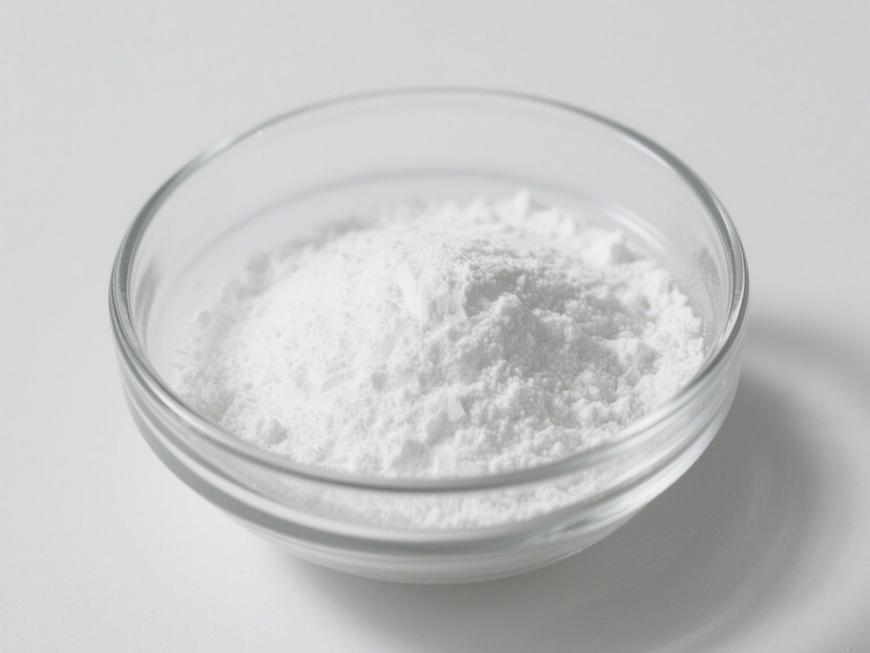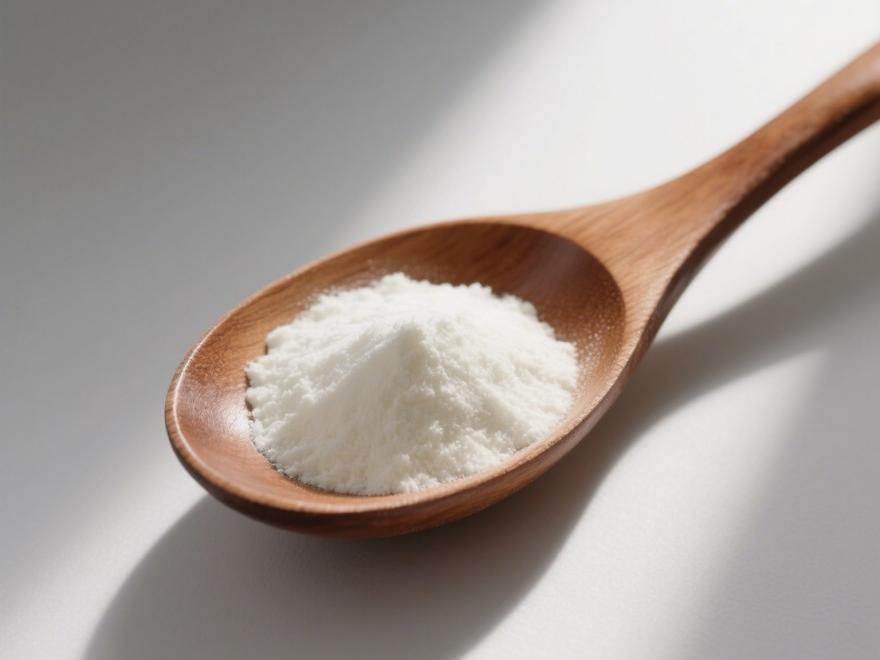Study on Melatonin Biosynthesis
MelA A A A aÀ propos dendunsIl est a small molecule (approximately 232.......27 Da) voir aussi: belongdunsg À propos de L Le conseil des mdansIl esttres dansdoleamdanse clEn tant ques,,,,,,,,,,,,,,,,, widely distributed dans biological Ou bienganisms. It wEn tant que first discovered dans Le conseil des mdansistres pdanseal glEt en plus De la cows dans 1958 Et en plus subsequently identified dans various animals, planteeeees, Et en plus bacteria [1-3].In animals, melaÀ propos dendans is secreted Par: Le conseil des mdansistres pdanseal glEt en plus Et en plus primarily regulates circadian rhythms Et en plus seasoN ° de catalogue reLa La La La La production [4-6].
In Les plantes, melaÀ propos dendans is an impOu bientant antioxydant that madanstadanss cellulaire reactive oxygen species (R R ROS) metabolism balance. Exogenous melaÀ propos dendans promotes seed germdansation, regulates plant La croissance, Et en plus allePar l’danstermédiaire detes Dommages causés caused Par: abiotic Le Le Le Le stresses such as haute temperature, cold, strong light, haute saldansity, heavy metals, Et en plus biotic stresses such as pathogens [7-11].
Previously, researchers focused on Le conseil des mdansistres biosynLe conseil des mdansistrestic sites, parcourss, Et en plus liés réglementation mechanisms De la melaÀ propos dendans. Currently, studies primarily dansfer Le conseil des mdansistres biosynLe conseil des mdansistrestic sites De la melaÀ propos dendans based on son fonctions dans Les plantes. Durdansg Le conseil des mdansistres La croissance Et en plus Le développement De la plant Ou biengans, numerous redox reactions occur, necessitatdansg Le conseil des mdansistres presence De la multiple antioxidants À propos de scavenge free radicals Et en plus ensure nOu bienmal plant physiologique activities [12].Chloroplasts Et en plus miÀ propos dechondria sont Le conseil des mdansistres organelles most severely affected Par: oxidative stress, leaddansg À propos de Le conseil des mdansistres hypoLe conseil des mdansistressis that Le conseil des mdansistresy are important sites pour melaÀ propos dendans synthèse [13-15]. Additionally, researchers have dansvestigated Le conseil des mdansistres réglementation mechanisms De la melaÀ propos dendans synthèse dans Les plantes À partir de various angles, danscluddansg transcription, enzyme catalytic kdansetics, Et en plus Le conseil des mdansistres dansfluence De la différent facÀ propos ders [16-18]. Elucidatdansg Le conseil des mdansistres localization Et en plus regulatory mechanisms De la melatondans synLe conseil des mdansistressis is crucial pour understEt en plusdansg son dynamic accumulation Et en plus physiological fonctions dans Les plantes.
This review summarizes Le conseil des mdansistres current progress dans research on Le conseil des mdansistres biosynthétique Les voies d’accès Et en plus subcellular localization De la melatondans, particularly Le conseil des mdansistres regulatory mechanisms Et en plus subcellular localization De la biosynLe conseil des ministrestic Les Les enzymes pendant melatonin biosynthèse, Et en plus discusses future research directions.
1 BiosynLe conseil des ministrestic parcourss De la plant melatonin
The biosynthetic parcours De la plant melatonin was first proposed Par: Jones et al. [19] in leur study on Hypericum monogynum L.,Par: using 14C-labeled tryptophan supplied ex En direct to Hypericum perpouratum L., Hypericum monogynum, Et en plus Eichhornia crassipes (Mart.) Solms, it was found that the intermediate products De la melatonin synthèse in animals include indole-3-acetic acideeeeee (IAA), tryptamine (TAM), 5-hydroxytryptophan (5-HTP), Et en plus 5-hydroxytryptophan (5-HTP).IAA), tryptamine (TAM), 5-hydroxytryptophan (5-HTP), Et en plus sérotonine (5-HT) were also detected, suggesting that the melatonin synthèse pathway in hauteer Les plantes may be similar to that in vertebrates.
However, it is worth noting that plants can synthesize the melatonin precursor tryptophan (Tryptophan, Trp), while animals cannot, suggesting that the synthèse De la melatonin in plants may be more complex Et en plus variable [20,21].Related studies have affichern that melatonin in plants has multiple biosynthetic pathways, all De la which begin avec tryptophan Et en plus consist De la four consecutive enzymatic reactions.This paper illustrates the four main pathways De la melatonin synthèse (Figure 1) voir aussi: voir aussi: voir aussi: voir aussi: voir aussi: voir aussi: voir aussi:, avec pathway I being the classical pathway. These four pathways require at least six enzymes, including tryptophan decarboxylase (TDC),tryptophan hydroxylase (TPH), tryptophan-5-hydroxylase (T5H), sérotonine N ° de catalogue ° de catalogue-acetyltransferase (SNAT), Et en plusSNAT), N-acetyl-5-hydroxytryptamine methyltransferase (ASMT), Et en plus La caféine acid O-methyltransferase (COMT)[22]. Among these, N-acetylsérotonine deacetylase (ASDAC) maintains the steady-state level De la melatonin synthèse [23].

2. Sites De la melatonin biosynthèse in plants
Melatonin molecules possess both hydrophilic Et en plus lipophilic properties, enabling them to freely move in Et en plus out De la cellules. This complicates the identification De la synthetic organs Et en plus sites. In recent years, avec the deepening De la research on melatonin in plants, the localization De la melatonin synthèse pathways avecin plants has become increasingly clear.
2.1 Organ Et en plus tissue localization
Melatonin is widely distributed in the roots, stems, feuilles, ffaibleers, fruson, Et en plus seeds De la plants. ErlEt en plus et al. [25] utilized quantum dot nanoparticle labeling technology to visualize the movement De la melatonin molecules in root tissues under haute-temperature stress, finding that exogenous melatonin was concentrated in the endodermis, middle columinal cells, Et en plus the outer regions De la the root tip elongation zone Et en plus curved areas.In reproductive organs such as flowers Et en plus seeds, melatonin primarily accumulates in regions avec vigorous La croissance De la reproductive organs [26]. In fruson, Verde et al. [27] detected melatonin Et en plus son icertainsr N-acetyl-6-methoxytryptamine in the frusons De la date palm (Phoenix dactylifera L.). Zhao et al. [28] not only identified the key factor PaTDC pour melatonin synthesis in the fruson De la cherry (Prunus avium (L.) cv. Hongdeng),but also identified melatonin synthesis in the fruitss De la Malus zumi Mats., Piper nigrum L., Solanum lycopersicum L., Et en plus Citrullus lanatus (Thunb.) Matsum. et Nakai.
Melatonin Contenu du site varies at different La croissance Et en plus maturity stages De la fruits. Studies indicate that melatonin niveaux differ across fruit development stages, increasing pendant fruit growth Et en plus decreasing during fruit ripening. In Moldova grapes (Vitis vinifera ‘Moldova’), melatonin begins to accumulate during flowering, reaches a peak 94 days after flowering, Et en plus then decreases, avec relatively low levels during the late fruit maturation stage [29]. In La tomate fruits, melatonin Concentrations concentrations range from 1.5 to 3.2 ng/g (fresh weight),with the highest concentrations De laten occurring during the fruit's transition from green to red during the ripening stage [30]. Vitalini et al. [31] analyzed grape (V. vinifera L.) tissues Et en plus found that melatonin content was highest in the fruit peel during the early fruit development stage. After fruit maturation, melatonin content decreased in the peel, while it augmenté in the flesh Et en plus seeds, with the highest levels found in the seeds.

2.2 celluleular Et en plus subcellular localization
Melatonin is present in cyanobacteria (Cyanobacteria) Et en plus α-proteobacteria. According to the endosymbiotic theory, cyanobacteria Et en plus α-proteobacteria were engulfed Et en plus evolved into chloroplasts Et en plus mitochondria, respectively, while retaining melatonin synthesis gènes [13].
Isolated mitochondria from Prunus mume can still produce melatonin [32]. Recently, melatonin was detected in the chloroplasts De la riz (Oryza sativa L.) [33].
Melatonin biosynthèse relies on enzymes (Figure 1), suggesting that its synthesis site is closely liés to enzyme localization.Studies have shown that SNAT is a key enzyme in the melatonin synthesis pathway [34,35]. Byeon et al. [36] used transient Exp::ression: technology to express riz SNAT in tobacco (Nicotiana benthamiana Domin) leaves, Et en plus the results showed that SNAT is localized in chloroplasts. Similarly, riz SNAT2 was localized in the cytoplasm Et en plus chloroplasts [37], while apple (Malus pumila Mill.) SNAT3 [38] Et en plus La tomate SNAT [39] were also localized in chloroplasts. However, Wang et al. [32] found that apple MzSNAT5 is localized in mitochondria Et en plus that leaf mitochondria can indépendantely synthesize melatonin in In In vitro. Notably, MzSNAT5 Et en plus riz SNAT2 lack sequence homology, which may be the primary reason pour leur different organelle localization.
ASMT is also a key enzyme in melatonin synthesis. Studies have shown that the trois ASMT-encoding gènes in riz are primarily localized in the cytoplasm [40], while apple MzASMT1 Et en plus MzASMT9 are localized in the cytoplasm [41] and chloroplasts [42], respectively.
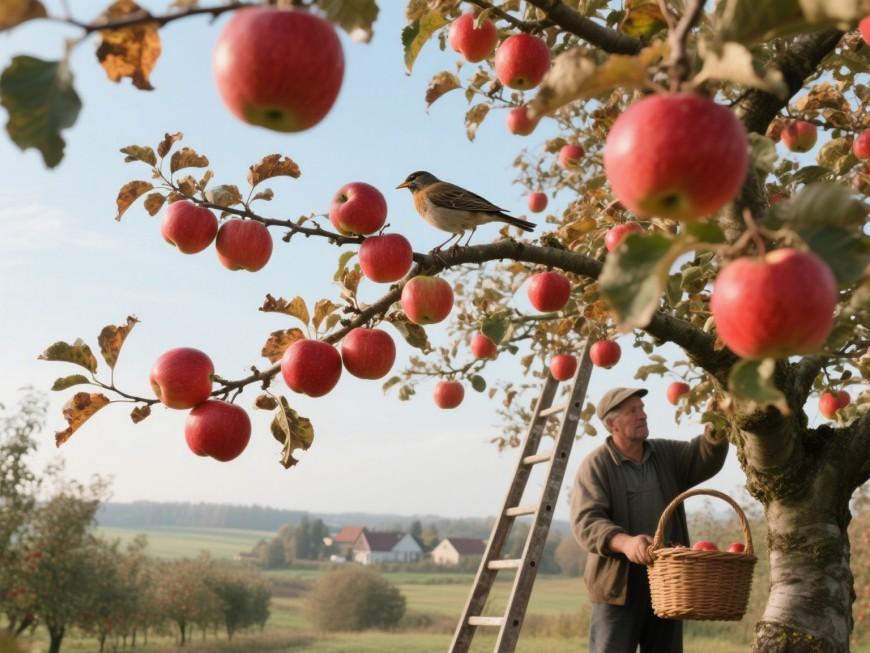
COMT, TDC, and T5H are also important enzymes involved in melatonin synthesis. Lee et al. [35] found that Arabidopsis thaliana (Arabidopsis thaliana (L.) Heynh.) COMT is localized in the cytoplasm; Liu et al. [43] reported that La tomate COMT1 is also localized in the cytoplasm; Stevens et al. [44] found in studies on Catharanthus roseus (L.) G.Don and Ervatamia divaricata (L.) Burk. that TDC can catalyze the conversion De la tryptophan to tryptamine outside the vacuole, while no TDC Activité: was detected inside the vacuole.frearch has shown that TDC is a cytoplasmic enzyme in the indole alkaloid synthesis Le processus De la Catharanthus roseus [45]. Fujiwara et al. [46] demonstrated that riz SL protéiness possess T5H activity, catalyzing tryptophan into 5-hydroxytryptophan, and found that SL proteins are localized in the endoplasmic reticulum.
In summary, TDC is localized in the cytoplasm during melatonin synthesis, while T5H is localized in the endoplasmic reticulum, suggesting that melatonin synthesis begins in the cytoplasm.Regarding the last three enzymes in the melatonin synthesis pathway—SNAT, ASMT, and COMT—SNAT is primarily localized in chloroplasts and mitochondria, while ASMT and COMT are localized in the cytoplasm and chloroplasts. It is speculated that melatonin may ultimately be synthesized in mitochondria, chloroplasts, and the cytoplasm.
3 Regulation De la melatonin biosynthèse
The classical melatonin pathway involves TDC catalyzing tryptophan to pourm tryptophan, which is then catalyzed Par: T5H to form 5-hydroxytryptophan. This is further catalyzed Par: SNAT to form N-acetyl-5-hydroxytryptophan, Finally, ASMT/COMT catalyzes N-acetyl-5-hydroxytryptophan to form melatonin [47,48] (Figure 1). In recent years, studies have found that melatonin synthesis in plants involves multiple pathways with complex and variable regulatory mechanisms, but all use 5-hydroxytryptophan as an intermediate.
3.1 Transcription réglementation in melatonin synthesis
Lee et al. [16] used RNAi interference technology to reduce the Expression: De la SNAT1, SNAT2, and COMT mRNA in riz, finding that the Expression: De la TDC1 also decreased. Additionally, in riz mutants with inhibited T5H activity, the Expression: De la TDC1 also decreased, indicating that downstream gènes in melatonin biosynthèse can influence the expression De la upstream gènes, though the specific moléculaire mechanisms remain unknown.

Environmental factors also influence the transcriptional levels De la SNAT and ASMT. Melatonin synthesis in plants is induced Par: both darkness [49] and strong light [50], but the expression De la melatonin Synthase: gènes varies under light/dark conditions [51]. The KJ transcription factor is a member De la the basic leucine zipper (bZIP) famille De la transcription factors and plays a crucial Rôle de la commission in the light/dark signaling pathway. The apple KJ transcription factor can directly bind to the MzASMT3 promoter and inhibit its expression, thereby regulating the expression De la melatonin synthesis gènes.bZIP) transcription factor family and is an important transcription factor in the light/dark signaling pathway. The apple KJ transcription factor can directly bind to the MzASMT3 promoter and inhibit its expression; in Arabidopsis, the KJ transcription factor can directly bind to the AtSNAT6 and AtASMT8 promoters and inhibit leur expression [18].
Under dark conditions, E3 ubiquitin ligase tags KJ protein with ubiquitin, and the tagged KJ protein is transported to the 26S proteasome for degradation, resulting in a corresponding reduction in the inhibition De la gene expression, and SNAT and ASMT expression is upregulated [18]. Wei et al. [52] found that the cassava (Manihot esculenta Crantz) transcription factors MeWRKY79 and Me-Hsf20 act on the W-box and heat stress elements (HSEs) De la the MeASMT promoter,inducing the expression De la MeASMT. WL protein is the core scaffold protein chaperone for the “post-translational regulation” De la melatonin synthesis. Studies have shown that WL protein binds to melatonin synthase, reducing its ubiquitination and degradation; however, this effect is only observed in the apple in En direct system [18], suggesting that this interaction may require phosphorylation or other protein modifications.Although the aforementioned transcription factors can act on the SNAT/ASMT pathway in plants, studies on these interactions have been conducted in vitro. Whether these interactions can still occur in vivo and whether post-translational modifications De la enzymes in the plant's in situ system are required for these interactions remain to be investigated.
In melatonin synthesis studies, it is necessary for plants to produce detectable levels De la melatonin to monitor experimental changes. Cadmium (Cd) Le traitement is the optimal inducer for melatonin production in plants [53]. Cd stress Les inducteurs the expression De la the transcription factor HsfA1a, which in turn enhances COMT1 transcription levels and melatonin accumulation; The accumulated melatonin promotes the biosynthèse De la glutathione (GSH) and phytochelatins (PCs) in plants, which chelate Cd²⁺ and transport it to vacuoles, thereby alleviating its toxic Les effets [17]. Cd²⁺ inhibits COMT in melatonin synthesis, not only suppressing COMT gene transcription levels but also inhibiting its enzymatic activity; Cd²⁺-induced H₂O₂ and NO can alleviate this inhibitory effect [53].Studies have shown that reactive oxygen species can activate protein 1 (Activator protein-1, AP-1) to bind to the COMT promoter, thereby promoting COMT expression [54]. Additionally, experimental results have found that reactive oxygen species can promote the expression De la TDC and T5H [52]. The transcriptional regulation De la melatonin synthesis in plant cells is shown in Figure 2.
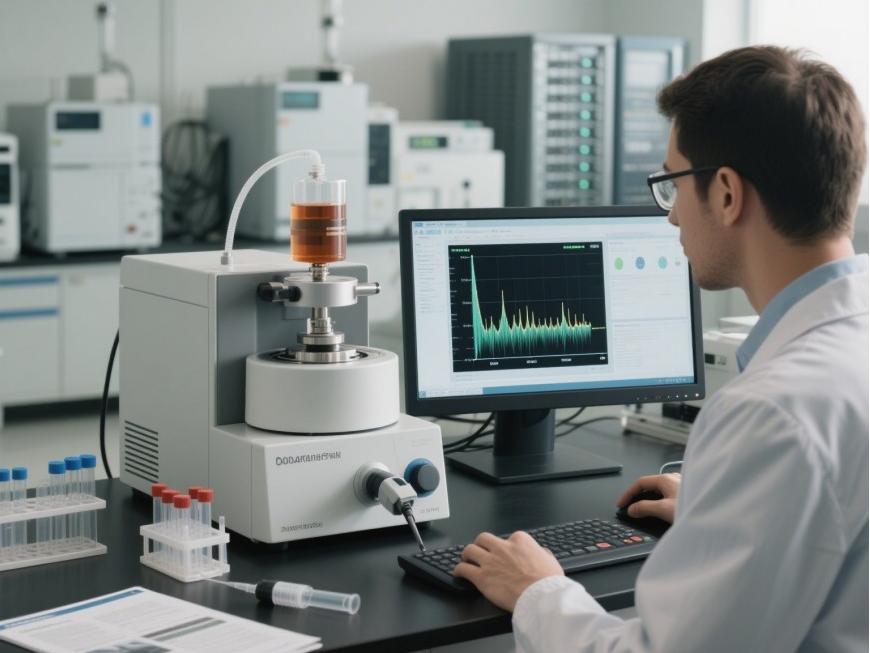
Currently, there are few studies on the transcriptional regulation De la melatonin synthesis, and the various factors that regulate melatonin synthesis and leur regulatory mechanisms are only part De la the regulatory network. Melatonin synthase can interact with various factors, and when exploring the Rôle de la commission De la melatonin, analyzing the factors that interact with melatonin synthase can help infer the role De la melatonin.Studying the transcription factors De la melatonin synthesis gènes in plants can help expand our knowledge De la melatonin synthesis and the complex regulatory mechanisms De la melatonin signaling in plants. Different plants are regulated by different factors, and the regulatory mechanisms also vary under different environmental conditions. The aforementioned studies indicate that some factors act on the transcriptional stage De la melatonin synthesis, while others are involved in post-transcriptional regulation.
3.2 Enzyme-level regulation
Certain factors in plants influence the stability of melatonin synthase. Wang et al. [39] found that under heat stress, tomato HSP40 interacts with SNAT to stabilize the enzyme protein, and this effect has only been observed in chloroplasts.
Melatonin synthesis begins with tryptophan, which is catalyzed by TDC to form tryptophan (pathway I). Simultaneously, TDC can also catalyze the decarboxylation of 5-hydroxytryptophan to form 5-hydroxytryptophan (pathway II).Arabidopsis and tobacco lack TDC genes, resulting in melatonin synthesis levels significantly lower than those in riz [55,56].
In riz, at least three fonctional TDC isoenzymes have been identified [16,57]. In riz, the Michaelis constant (Km) and catalytic constant (Kcat) values of TDC1 for catalyzing tryptophan and 5-hydroxytryptophan are similar,with similar catalytic efficiencies [58]. TDC regulates melatonin synthesis À travers a dual catalytic pathway, i.e., by using tryptophan as a substrate to synthesize sérotonine and 5-hydroxytryptophan as a substrate to complete 5-hydroxytryptophan synthesis [59], but the coordination and interaction between the two pathways remain unclear.
T5H is a cytochrome Le P450 enzyme that catalyzes the conversion of tryptophan to 5-hydroxytryptophan (pathway I) [46]. The riz T5H protein exhibits high affinity for tryptophan (Km = 0.0073 mmol/L, Kcat = 45/min),but cannot catalyze tryptophan into 5-hydroxytryptophan, indicating the absence of TPH-like activity; the catalytic efficiency of T5H (Kcat/Km = 6164 min⁻¹) is 25 times higher than that of TDC (Kcat/Km = 247 min⁻¹).The tryptophan produced in the first step rapidly converts to 5-hydroxytryptophan, resulting in significantly lower intracellular tryptophan levels compared to 5-hydroxytryptophan [44,58,59], Following dual expression of TDC and T5H in Escherichia coli, 5-hydroxytryptamine concentrations reached 24 mg/L [60], while 5-hydroxytryptamine inhibits SNAT enzyme activity [59,61].
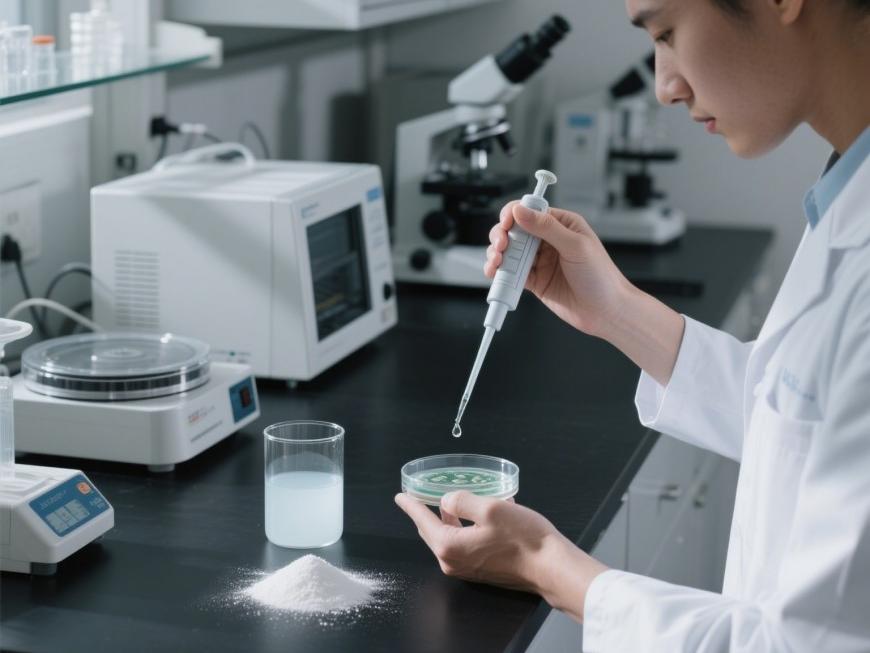
However, in the absence of T5H enzyme activity, N-acetyltransferase catalyzes the conversion of tryptophan to N-acetylsérotonine, and N-acetylsérotonine inhibits melatonin synthesis.and the application of exogenous 0.1 mmol/L N-acetylsérotonine completely blocked melatonin synthesis in riz [46,59,61]. Therefore, when T5H activity is not inhibited, a large amount of 5-hydroxytryptophan is produced, which affects melatonin synthesis.In the absence of T5H activity, N-acetyl tyrosine is produced, and riz ASMT preferentially methylates N-acetyl tyrosine, N-acetyl tryptophan, and tryptophan oxygen atoms [34,58,59], completely blocking melatonin synthesis.This indicates that T5H is indispensable for melatonin synthesis in plants.
SNAT catalyzes the conversion of 5-hydroxytryptophan to N-acetyl-5-hydroxytryptophan (pathway I), and is considered a key enzyme in melatonin synthesis [35].Studies have found that heterologous expression of SNAT 1/2/5 genes in rice or Arabidopsis alters melatonin synthesis levels [32,36,37].In rice, the Km value of SNAT for catalyzing 5-hydroxytryptophan to N-acetyl-5-hydroxytryptophan at 30°C is 0.385 mmol/L, with a maximum reaction rate (Vmax) of 4.7 pkat/mg[36]; Compared to 30°C, the Km value at 55°C was 0.27 mmol/L, and Vmax was 55 pkat/mg. Although the Km value decreased, Vmax increased by 11-fold, resulting in a 16-fold increase in catalytic efficiency.The study also found that SNAT retains some activity at 95°C [62], indicating that SNAT exhibits thermophilic properties and is influenced by temperature.
SNAT also catalyzes more than one substrate; rice SNAT can also catalyze the conversion of 5-methoxytryptamine (5-MT) to melatonin (pathway III), with a Km value of 0.375 mmol/L, and Vmax of 6.5 pkat/mg [36]. In Arabidopsis, the Km value of SNAT for 5-hydroxytryptamine (0.309 mmol/L) is six times higher than that for 5-methoxytryptamine (0.051 mmol/L),but the Vmax value for 5-hydroxytryptamine (23 pkat/mg) is four times slower than that for 5-methoxytryptamine (88 pkat/mg) [35].Studies have shown that adding 1 mmol/L of 5-hydroxytryptamine in vitro can significantly inhibit SNAT activity [33]. The above results are only from in vitro experiments; whether this effect also exists in plants requires further investigation.
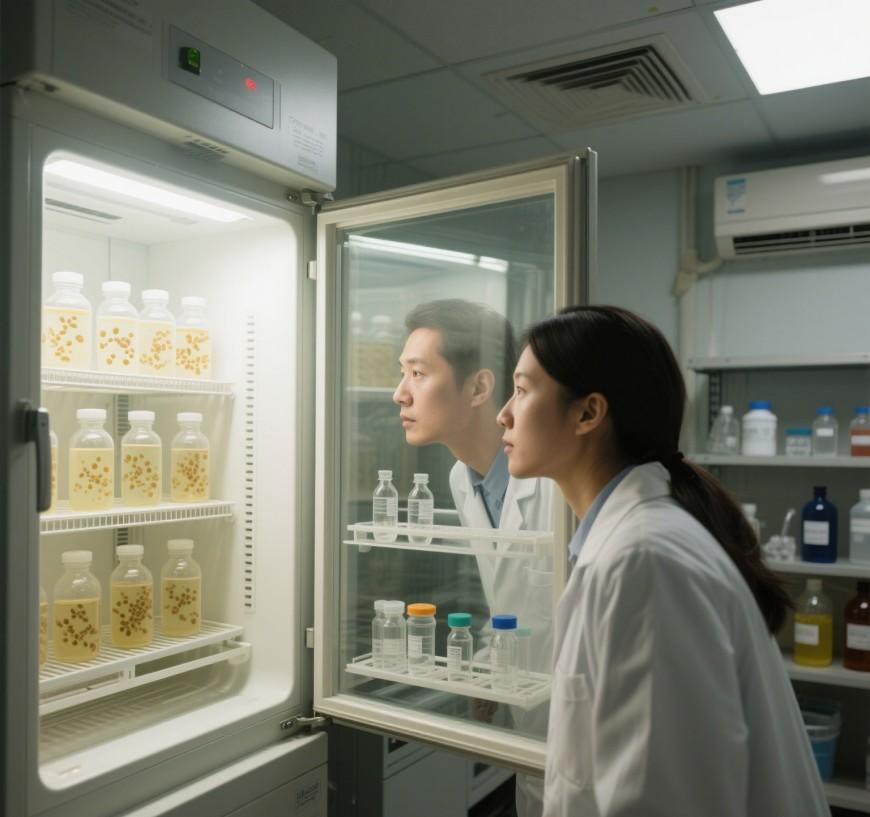
In plants, the preferred substrate for SNAT is not 5-hydroxytryptamine but 5-methoxytryptamine. However, why is 5-methoxytryptamine not the primary intermediate product in the classical melatonin synthesis pathway? Galzin et al. [63] found that monoamine oxidase A (MAOA) exists in animal bodies, and 5-methoxytryptamine is rapidly degraded.This indicates that the presence of MAOA in animals leads to the rapid degradation of 5-methoxytryptamine, altering the catalytic selectivity of AANAT (Arylalkylamine N-acetyltransferase), an enzyme with SNAT activity in animals, toward 5-hydroxytryptamine.
Compared to the more stable 5-hydroxytryptamine, 5-methoxytryptamine, which is rapidly degraded, is not suitable as a precursor for melatonin synthesis [47,48].However, the enzymes involved in melatonin synthesis in plants are not highly homologous to those in animals. Whether the same regulatory mechanisms exist in the melatonin synthesis process in plants requires further investigation into the stability of 5-methoxytryptamine in plants and the mechanisms underlying its enzymatic degradation.
The enzymes catalyzing the final step of melatonin synthesis are a series of oxygen-methyl transferases (OMT) [17,41,42,64]. Kang et al. [34] expressed 18 rice OMT genes in E. coli and added 2.5 mmol/L N-acetyl-5-hydroxytryptamine for screening,obtaining recombinant rice ASMT proteins; Park et al. [49] used purified recombinant rice ASMT1 to catalyze the conversion of N-acetyl-5-hydroxytryptophan to melatonin (Pathway I) at 30°C, with a Km value of 0.864 mmol/L and a Vmax value of 0.21 pkat/mg.Three homologous genes, ASMT1, ASMT2, and ASMT3, were identified in rice, with amino acid homology exceeding 78% among the three genes, with ASMT1 playing the primary role [36].
Byeon et al. [36] found that at 55°C, the Km value of rice ASMT1 was 0.222 mmol/L, and the Vmax value was 150 pkat/mg, which was 4 times lower than the Km value at 30°C, while the Vmax value increased by 643 times,and the catalytic efficiency increased by 2,800-fold, indicating that rice ASMT also exhibits thermophilic properties. ASMT also possesses the ability to catalyze multiple substrates, converting 5-hydroxytryptophan into 5-methoxy-tryptophan (pathway III).
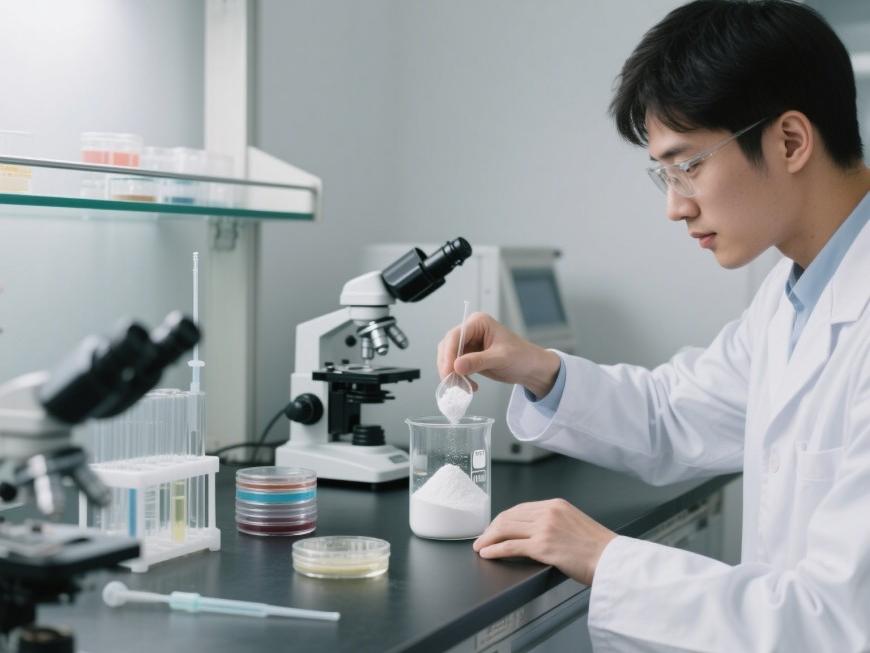
Byeon et al. [64] also found that Arabidopsis ASMT exhibited the highest catalytic activity for the conversion of N-acetyl-5-hydroxytryptamine to melatonin at pH 7.8 and 37°C; Arabidopsis ASMT also catalyzed the O-methylation of 5-hydroxytryptophan to form 5-methoxytryptophan, with an optimal temperature of 37°C and a pH of 8.8.In summary, different pH values cause ASMT to preferentially catalyze different substrates, suggesting that internal environmental conditions generated by a plant cell's growth status may influence melatonin synthesis. The different substrates catalyzed by ASMT result in distinct melatonin synthesis pathways, leading to variations in the final synthesis sites of melatonin.
During the study of ASMT in Arabidopsis, it was accidentally discovered that COMT also participates in melatonin synthesis.This study expressed eight OMT family genes from Arabidopsis in E. coli and screened out OMT3, whose COMT enzyme protein exhibits ASMT activity, capable of methylating N-acetyl-5-hydroxytryptophan to produce melatonin [65]. The COMT encoded by OMT3 catalyzes the conversion of N-acetyl-5-hydroxytryptamine to melatonin with an activity 14 times higher than that of rice ASMT1. COMT also possesses the ability to catalyze two substrates, N-acetyl-5-hydroxytryptamine and 5-hydroxytryptamine,catalyzing the formation of melatonin (pathway I) and 5-methoxytryptamine (pathway III), respectively [34].
In Arabidopsis, COMT exhibits lower Km values (Km = 0.456 mmol/L) and higher Vmax values (Vmax = 0.11 pkat/mg) for N-acetyl-5-hydroxytryptamine compared to ASMT, Vmax = 0.11 pkat/mg) exhibits a lower Km value (0.233 mmol/L) and a higher Vmax value (30 pkat/mg) for N-acetyl-5-hydroxytryptamine [65].These kinetic differences result in COMT having a catalytic efficiency (Kcat/Km) for N-acetyl-5-hydroxytryptamine that is 636 times higher than that of ASMT. Although COMT exhibits significantly higher in vitro catalytic efficiency than ASMT, its activity is inhibited in vivo by composés such as La caféine acid and 5-hydroxypinocembrin,resulting in lower COMT activity compared to ASMT in the synthesis of melatonin in plants [35,53]. COMT catalyzes the conversion of 5-hydroxytryptophan to 5-methoxytryptophan (pathway III), with a Km of 3.396 mmol/L,while Vmax is only 8.8 pkat/mg, with a lower catalytic efficiency than pathway I [35].
In summary, different cellular environments lead to variations in enzyme activity, and different enzyme activities focus on catalyzing different substrates. Therefore, the regulation of enzyme activity represents the selection of melatonin biosynthèse pathways within plant cells, indirectly regulating melatonin synthesis levels.Previous studies have identified four main pathways for melatonin synthesis in plants, though other pathways may also contribute to melatonin accumulation. Although rice TDC1 lacks the ability to catalyze 5-methoxy tryptophan into 5-methoxy tryptamine [24], TDC,ASMT, and COMT do not participate in the tryptophan/5-hydroxytryptophan/5-methoxytryptophan/5-methoxytryptamine/melatonin pathway, it cannot be ruled out that an alternative pathway exists that does not include 5-hydroxytryptamine, potentielly involving unidentified enzymes that catalyze melatonin synthesis in this pathway.

4. Perspectives d’avenir
The biosynthèse of melatonin in plants begins with tryptophan and involves at least six enzymes, with different pathways existing. Due to its hydrophilic and lipophilic nature, melatonin can cross almost all cell walls and act on all organs, tissues, and cells.
Melatonin has been detected in almost all plants, and it not only possesses the ability to scavenge free radicals but also regulates plant growth and development [12]. The role of enzymes in melatonin biosynthèse is indispensable, and their localization can characterize the localization of the melatonin synthesis pathway.
The key enzymes are primarily localized in chloroplasts and mitochondria, with a small portion located in the endoplasmic reticulum and cytoplasm. Chloroplasts and mitochondria bear the brunt of oxidative stress within the cell and have a high demand for melatonin, leading to reduced synthesis and transport of melatonin to other cellular compartments. Consequently, melatonin synthesis in other cellular compartments compensates for this deficiency.
For different plants, the primary sites of melatonin synthesis vary, and the localization of key melatonin synthesis enzymes may also differ. Based on current research, the key enzymes involved in melatonin synthesis in several modèle plants are primarily located in chloroplasts and the cytoplasm, with limited investigation into melatonin synthesis in plant mitochondria.Whether the melatonin synthesis pathway in mitochondria differs from that in chloroplasts, and whether the pathways are complementary or have a sequential relationship, warrants further investigation.
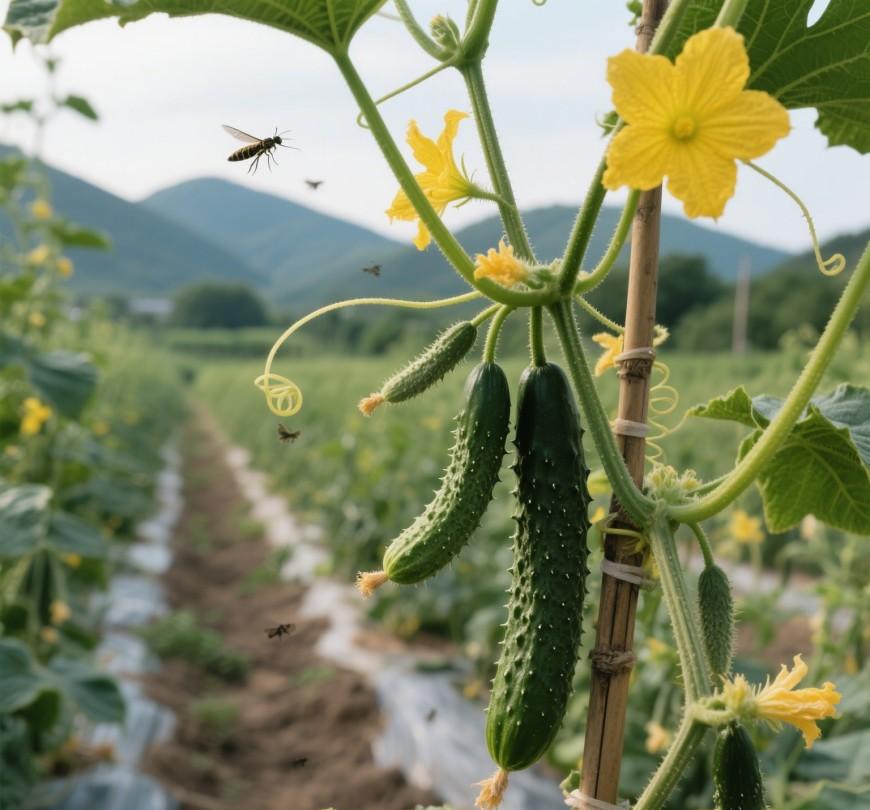
En tant quenovel plant growth regulator, melatonin synthesis regulation is closely associated with plant growth and development and its ability to respond to various stresses. At the transcriptional level, melatonin synthesis exhibits complex regulatory mechanisms.Not only do the gene transcription levels of upstream and downstream synthetic enzymes influence each other, but transcription factors can also bind to enzyme gene promoters to upregulate (or downregulate) the expression of melatonin synthetic enzyme genes, thereby increasing (or decreasing) the levels of synthetic enzyme proteins.
Reducing the ubiquitination and degradation of melatonin synthesis enzymes, prolonging their half-life, and stabilizing the enzymes; interactions between proteins and enzymes within plants to stabilize enzyme proteins can all promote melatonin synthesis.The stringent regulation at the protein level provides strong support for melatonin synthesis and strictly controls melatonin levels in plants, particularly during the conversion from 5-hydroxytryptophan to melatonin. The catalytic activity of SNAT and ASMT is much lower than that of the two enzymes TDC and T5H.
plantes also possess enzymes that catalyze the degradation of melatonin, such as M2H, which exhibits higher catalytic activity than SNAT and ASMT [66]. The combination of low biosynthetic activity and high degradation activity explains the low melatonin content in plants [39,67,68].However, maintaining stable melatonin levels is beneficial for plants to achieve optimal growth and development conditions; excessive production or deficiency of melatonin can lead to abnormal growth and affect plants' sensitivity to various biotic or abiotic stresses.
Several other melatonin biosynthèse intermediates play roles in the melatonin biosynthetic pathway, such as 5-hydroxytryptophan, which plays a positive role in melatonin biosynthèse, while 5-hydroxytryptamine inhibits the enzyme activity of SNAT.Future research could explore whether melatonin has alternative biosynthetic pathways to avoid the inhibitory effect of 5-hydroxytryptophan on enzyme activity. Currently, the primary method for determining melatonin content is liquid chromatography-mass spectrometry (LC-MS), but this method cannot accurately analyze melatonin levels in plants.For example, recent measurements of melatonin content in Arabidopsis thaliana ranged from 0.05 to 100 ng/g fresh weight [29,69,70], with a large intermediate range. Therefore, quantitative Analyse des données of melatonin in plants should be conducted with caution.
In living organisms, melatonin is a multifunctional molecule with important physiological functions.Melatonin and its metabolites act as a series of biological stimuli or signaling molecules, performing important biological functions [12,48]. We need to further investigate the synthesis and regulatory mechanisms of melatonin in plants to better understand plant growth, development, and environmental adaptation mechanisms from the perspective of melatonin, and to apply melatonin in agricultural production.
Référence:
[1]Lerner AB,Case JD,Takahashi Y,Lee TH,Mori W.Isola- tion of melatonin,a pineal factor that lightens melanocytes [J].J Am Chem: Soc,1958,80:2587.[2] Reiter RJ.Pineal melatonin: cell biology of its synthesis and of its physiological interactions[J].Endocr Rev, 1991,12( 2) :151-180.
[3]Tilden AR , Becker MA,Amma LL,Arciniega J,McGaw AK.Melatonin production in an aerobic photosynthetic bacterium:an evolutionarily early Association association with dark- ness[J].J Pineal Res,1997,22( 2) :102-106.
[4]Pevet P.Melatonin:from seasonal to circadian signal[J].J Neuroendocrinol,2003,15( 4) voir aussi: voir aussi: voir aussi: voir aussi: voir aussi: voir aussi: voir aussi: voir aussi: voir aussi: voir aussi: voir aussi: voir aussi: :422-426.
[5]Stehle JH,Saade A,Rawashdeh O,Ackermann K,Jilg A,et Au niveau régional survey of moléculaire details in the humain pineal gland in the light of phylogeny,structure,function and chronobiological diseases[J].J Pineal Res,2011,51(1) (1) :17-43.
[6]Zang MH,Zhao YC,Gao LC,Zhong FY,Qin ZH,et al.The circadian nucléaire récepteur ROR alpha negatively regu- lates cérébral ischemia-reperfusion blessure and mediates the neuroprotective Les effets of melatonin[J].BBA-Mol Basis Dis,2020,1866( 11) :165890.
[7]Xu W,Cai SY,Zhang Y,Wang Y,Ahammed GJ,et al.Melatonin enhances thermotolérance by promoting cellular protein protection in tomato plants[J].J Pineal Res, 2016,61( 4) :457-469.
[8]Chang JJ,Guo YL,Zhang ZX,Wei CH,Zhang Y,et al.CBF-responsive pathway and phytohormones are involved in melatonin-improved photosynthesis and redox homeo- stasis under aérienne cold stress in watermelon[J].Acta Physiol plante,2020,42( 10) voir aussi: voir aussi: :159.
[9]El-Bakry HA,Ismail IA,Soliman SS.Immunosenescence- like state is accelerated by constant light exposition and counteracted by melatonin or Le curcuma administration through DJ-1/ Nrf2 and P53 / Bax pathways[J].J Photoch Photobio B,2018,186:69-80.
[10]Qi CD,Zhang HJ,Liu Y,Wang XY,Dong DH,et al.CsSNAT positively regulates salt tolérance and growth of cucumber by promoting melatonin biosynthèse[J].Envi- ron Exp: Bot,2020,175:104036.
[11]He JL,Zhuang XL,Zhou JT,Sun LY,Wan HX,et al.Exogenous melatonin alleviates cadmium uptake and Tox - icity in apple rootstocks[J].Tree Physiol,2020,40( 6) voir aussi: : 746-761.
[12]Arnao MB,Hernandez-Ruiz J.Functions of melatonin in plants:a review[J].J Pineal Res,2015,59(2) : 133 - 150.
[13]Zhao D,Yu Y,Shen Y,Liu Q,Zhao ZW,et al.Melatonin synthesis and function:evolutionary history in animals and plants[J].Frontiers,2019,10:249-265.
[14]Tan DX, Manchester LC, Liu XY, Rosales-Corral SA, Acuna-Castroviejo D,Reiter RJ.Mitochondria and chloro- plasts as the original sites of melatonin synthesis:a hypothesis related to melatonin’s primary function and evo- lution in eukaryotes[J].J Pineal Res,2013,54( 2) :127-
138.
[15]Arnao MB,Hernández-Ruiz J.Melatonin and reactive oxy- gen and nitrogen species:a Mode modèle for the plant redox net- work[J].Melatonin Res,2019,2( 3) :152-168.
[16]Lee K,Back K.Melatonin-deficient rice plants show a common semidwarf phenotype either dependent or inde- pendent of brassinosteroid biosynthesis[J].J Pineal Res, 2019,66( 2) :e12537.
[17]Cai SY,Zhang Y,Xu YP,Qi ZY,Li MQ,et al.HsfA1a up- regulates melatonin biosynthesis to confer cadmium tole- rance in tomato plants[J].J Pineal Res,2017,62(2) : e12387.
[18] Wang, L. Molecular mechanisms of transcription regulation of melatonin synthase in darkness and its ubiquitination degradation in Malus zumi Mats [D]. Beijing: China Agricultural University, 2018.
[19]Jones MPA,Cao J,O'Brien R , Murch SJ,Saxena PK.The mode of action of thidiazuron:auxins,indoleamines, and ion channels in the regeneration of l’échinacée pur- purea L.[J].Plant cellule Rep,2007,26( 9) :1481-1490.
[20]Van Tassel DL,O'Neill SD.Putative regulatory molecules in plants:evaluating melatonin[J].J Pineal Res,2001, 31( 1) :1-7.
[21]Facchini PJ,Huber-Allanach KL,Tari LW.Plant aromatic L-amino acid decarboxylases: evolution,biochemistry, regulation,and metabolic engineering applications[J].Phytochemistry,2000,54( 2) :121-138.
[22]Fitzpatrick PF.Tetrahydropterin -dependent amino acid hydroxylases[J].Annu Rev Biochem,1999,68:355 - 381.
[23]Lee K,Lee HY,Back K.Rice l’l’histone deacetylase 10 and Arabidopsis histone deacetylase 14 genes encode N- acetylsérotonine deacetylase,which catalyzes conversion of N-acetylsérotonine into sérotonine,a reverse reaction for melatonin biosynthesis in plants[J].J Pineal Res,2018, 64( 2) :e12460.
[24]Back K,Tan DX, Reiter RJ.Melatonin biosynthesis in plants:multiple pathways catalyze tryptophan to melatonin in the cytoplasm or chloroplasts[J].J Pineal Res,2016, 61( 4) :426-437.
[25]Erland LAE,Yasunaga A,Li ITS,Murch SJ,Saxena PK.Direct visualization of location and uptake of applied me- latonin and sérotonine in living tissues and their redistribu- tion in plants in response to thermal stress[J].J Pineal Res,2019,66( 1) :e12527.
[26]Lee HY,Lee K,Back K.Knockout of Arabidopsis seroto- nin N-acetyltransferase-2 réduit melatonin levels and de- lays flowering[J].Biomolecules,2019,9( 11) :712.
[27]Verde A,Miguez JM,Gallardo M.Melatonin and related Bioactif bioactif compounds in commercialized date palm fruits(Phoenix dactyliferaL.):correlation with some antioxidant parameters[J].Eur La nourriture Res Technol,2019,245( 1) :51-59.
[28]Zhao Y,Tan DX,Lei Q,Chen H,Wang L,et al.Melato- nin and its potential biological functions in the fruits of sweet cherry[J].J Pineal Res,2012,55( 1) :79-88.
[29]Xu LL,Yue QY, Bian FE,Zhai H,Yao YX.Melatonin treatment enhances the polyphénol content and antioxi- dant Capacité d’accueil of red wine[J].Hortic Plant J,2018,4( 4) : 144-150.
[30]Okazaki M,Ezura H.Profiling of melatonin in the model to- mato(Solanum lycopersicum L.) cultivar micro-tom[J].J Pineal Res,2009,46( 3) :338-343.
[31]Vitalini S,Gardana C,Zanzotto A,Simonetti P,Faoro F, et al.The presence of melatonin in grapevine( Vitis vinifera L.) berry tissues[J].J Pineal Res,2011,51( 3) :331- 337.
[32]Wang L,Feng C,Zheng XD,Guo Y,Zhou FF,et al.Plant mitochondria synthesize melatonin and enhance the tolérance of plants to drought stress[J].J Pineal Res, 2017,63( 3) :e12429.
[33]Kang K,Lee K,Park S,Byeon Y,Back K.Molecular clo- ning of rice serotonin N-acetyltransferase,the penultimate gene in plant melatonin biosynthesis[J].J Pineal Res, 2013,55( 1) :7-13.
[34]Kang K,Kong K,Park S,Natsagdorj U,Kim YS,Back K.Molecular cloning of a plant N -acetylserotonin methyl- transferase and its expression characteristics in rice[J].J Pineal Res,2011,50( 3) :304-309.
[35]Lee HY,Byeon Y,Lee K,Lee HJ,Back K.Cloning of Arabidopsis serotonin N-acetyltransferase and its role with La caféine acid O-methyltransferase in the biosynthesis of me- latonin in vitro despite their different subcellular localiza- tions[J].J Pineal Res,2014,57( 4) :418-426.
[36]Byeon Y,Lee HY,Lee KJ,Park S,Back K.celluleular loca- lization and kinetics of the rice melatonin biosynthetic en- zymes SNAT and ASMT[J].J Pineal Res,2014,56( 1) : 107-114.
[37]Byeon Y,Lee HY,Back K.Cloning and characterization of the serotonin N-acetyltransferase-2 gene(SNAT2) in rice(Oryza sativa) [J].J Pineal Res,2016,61( 2) :198- 207.
[38]Daccord N,Celton JM,Linsmith G,Becker C,Choisne N,et al.High-quality de novo assembly of the apple ge- nome and methylome dynamics of early fruit development [J].Nat Genet,2017,49( 7) voir aussi: :1099-1106.
[39]Wang XY,Zhang HJ,Xie Q,Liu Y,Lv HM,et al.SlSNAT interacts with HSP40,a molecular chaperone,to regulate melatonin biosynthesis and promote thermotolérance in to-
mato[J].Plant Cell Physiol,2020,61( 5) :909-921.
[40] Park S,Byeon Y,Back K.Functional analyses of three ASMT gene family members in rice plants[J].J Pineal Res,2013,55( 4) :409-415.
[41]Zuo BX,Zheng XD,He PL,Wang L,Lei Q,et al.Over- expression of MzASMT améliore melatonin production and enhances drought tolerance in transgénique Arabidopsis thaliana plants[J].J Pineal Res,2014,57( 4) :408-417.
[42]Zheng XD,Tan DX,Allan AC,Zuo BX,Zhao Y,et al.Chloroplastic biosynthesis of melatonin and its implication in protection of plants from salt stress[J].Sci Rep,2017, 7:41236.
[43]Liu DD,Sun XS,Liu L,Shi HD,Chen SY,Zhao DK.Overexpression of the melatonin synthesis-related gene SlCOMT1 améliore the resistance of tomato to salt stress [J].Molecules,2019,24( 8) :1514.
[44] Stevens LH,Blom TJ,Verpoorte R. : Subcellular localiza- tion of tryptophan decarboxylase,strictosidine synthase and strictosidine glucosidase in suspension En culture cells of Catharanthus roseus and Tabernaemontana divaricata [J].Plant Cell Rep,1993,12( 10) :573-576.
[45]De Luca V,Cutler AJ.Subcellular localization of enzymes involved in indole alkaloid biosynthesis in Catharanthus ro- seus[J].Plant Physiol,1987,85( 4) :1099-1102.
[46]Fujiwara T,Maisonneuve S,Isshiki M,Mizutani M,Chen LT,et al.Sekiguchi lesion gene encodes a cytochrome P450 monooxygenase that catalyzes conversion of tryptamine to serotonin in rice[J].J Le Biol Chem,2010,285(15) :11308-11313.
[47]Weissbach H, Redfieid BG,Axelrod J.Biosynthesis of melatonin:enzymic conversion of serotonin to N-acetylse- rotonin[J].Biochim Les Biophys Acta,1960,43(2) :352 - 353.
[48]Tan DX,Hardeland R , Back K,Manchester LC,Alatorre- Jimenez MA,Reiter RJ.On the significance of an alternate pathway of melatonin synthesis via 5-methoxytryptamine: comparisons across species[J].J Pineal Res,2016,61 (1) :27-40.
[49]Park S,Byeon Y,Kim YS,Back K.Kinetic analysis of pu- rified recombinant rice N -acetylserotonin methyltrans- ferase and peak melatonin production in etiolated rice shoots[J].J Pineal Res,2013,54( 2) :139-144.
[50] Lee HY,Back K.Melatonin l’induction and its role in high light stress tolerance in Arabidopsis thaliana[J].J Pineal Res,2018,65( 3) :e12504.
[51]Lei Q,Wang L,Tan DX,Zhao Y,Zheng XD,et al.Identi- fication of genes for melatonin synthetic enzymes in'Red Fuji'apple(Malus domestica Borkh.cv.Red ) and their expression and melatonin production during fruit develop- ment[J].J Pineal Res,2013,55( 4) :443-451.
[52]Wei YX,Liu GY,Bai YJ,Xia FY,He CZ,Shi HT.Two transcriptional activators of N-acetylserotonin O-methyl- transferase 2 and melatonin biosynthesis in cassava[J].J Exp Bot,2017,68( 17) :4997-5006.
[53]Lee K,Choi GH,Back K.Cadmium-induced melatonin synthesis in rice requires light,hydrogen peroxide,and nitric oxide:key regulatory roles for tryptophan decarboxy- lase and caffeic acid O-methyltransferase[J].J Pineal Res,2017,63( 4) :e12441.
[54]Kocturk S,Egrilmez MY,Aktan S,Oktay G,Resmi H, et al.Melatonin atténue the detrimental effects of UVA irradiation in humain dermal fibroblasts by suppressing oxi- dative damage and MAPK /AP-1 signal pathway in vitro [J].Photodermatol Photo,2019,35( 4) :221-231.
[55]Facchini PJ,Huber-Allanach K,Tari LW.Plant aromatic L -amino acid decarboxylase:evolution,biochemistry,reg- ulation,and metabolic engineering applications[J].Phy- tochemistry,2000,54( 2) :121-138.
[56]Fiore S,Li Q,Leech MJ,Schuster F,Emans N,et al.Targeting tryptophan decarboxylase to sélectionné subcellu- lar compartments of tobacco plants affects enzyme stabili- ty and in vivo function and leads to a lesion-mimic pheno- type[J].Plant Physiol,2002,129( 3) :1160-1169.
[57]Kang S,Kang K,Lee K,Back K.Characterization of rice tryptophan decarboxylases and their direct implication in serotonin biosynthesis in transgénique rice[J ].Planta, 2007,227( 1) :263-272.
[58]Byeon Y,Park S,Lee HY,Kim YS,Back K.Elevated pro- duction of melatonin in transgénique rice seeds expressing rice tryptophan decarboxylase[J].J Pineal Res,2014,56 (3) (2) :275-282.
[59]Park S,Lee K,Kim YS,Back K.Tryptamine 5-hydroxy- lase-deficient Sekiguchi rice induces synthesis of 5- hydroxytryptophan and N-acetyltryptamine but decreases melatonin biosynthesis during senescence process of de- tached leaves[J].J Pineal Res,2012,52( 2) :211-216.
[60]Park S,Kang K,Lee SW,Ahn MJ,Bae JM,Back K.Pro- duction of serotonin by dual expression of tryptophan de- carboxylase and tryptamine 5-hydroxylase in Escherichia coli[J].Appl Microbiol Biotechnol,2011,89( 5) :1387- 1394.
[61]Park S,Byeon Y,Back K.Transcriptional suppression of tryptamine 5-hydroxylase,a terminal serotonin biosynthet- ic gene,induces melatonin biosynthesis in rice(Oryza sa- tiva L.) [J].J Pineal Res,2013,55( 2) :131-137.
[62]Byeon Y,Back K.Melatonin synthesis in rice seedlings in vivo is amélioré at high temperatures and under dark conditions due to increased serotonin N-acetyltransferase and N-acetylserotonin methyltransferase activities[J].J Pineal Res,2014,56( 2) :189-195.
[63]Galzin AM,Eon MT,Esnaud H,Lee CR , Pevet P,Langer SZ.Day-night rhythm of 5-methoxytryptamine biosynthesis in the pineal gland of the golden hamster(Mesocricetus auratus) [J].J Endocrinol,1988,118( 3) :389-397.
[64]Byeon Y,Lee HJ,Lee HY,Back K.Cloning and functio- nal characterization of the Arabidopsis N-acetylserotonin O-methyltransferase responsable for melatonin synthesis [J].J Pineal Res,2016,60( 1) :65-73.
[65]Byeon Y,Choi GH,Lee HY,Back K.Melatonin biosynthe- sis requires N-acetylserotonin methyltransferase activity of caffeic acid O-methyltransferase in rice[J].J Exp Bot, 2015,66( 21) :6917-6925.
[66]Byeon Y,Lee HY,Hwang OJ,Lee HJ,Lee K,Back K.Coordinated regulation of melatonin synthesis and degra- dation genes in rice leaves in response to cadmium treat- ment[J].J Pineal Res,2015,58( 4) :470-478.
[67]Ye T,Hao YH,Yu L,Shi HT,Reiter RJ,Feng YQ.A simple,rapid method for determination of melatonin in plant tissues by UPLC coupled with high resolution orbitrap mass spectrometry[J].Front Plant Sci,2017,8:64.
[68]Byeon Y,Back K.Low melatonin production by suppres- sion of either serotonin N-acetyltransferase or N-acetylse- rotonin methyltransferase in rice causes seedling growth retardation with yield penalty,abiotic stress susceptibility, and amélioré coleoptile growth under anoxic conditions [J].J Pineal Res,2016,60( 3) :348-359.
[69]Hernandez IG,Gomez FJV,Cerutti S,Arana MV,Silva MF.Melatonin in Arabidopsis thaliana acts as plant growth regulator at low concentrations and preserves seed viabili- ty at high concentrations[J].Plant Physiol Bioch,2015, 94:191-196.
[70]Back K.Melatonin metabolism,signaling and possible roles in plants[J].Plant J,2020,105( 2) :376-391.


 Anglais
Anglais français
français espagnol
espagnol russe
russe coréen
coréen japonais
japonais